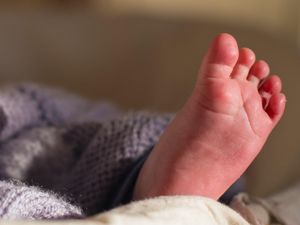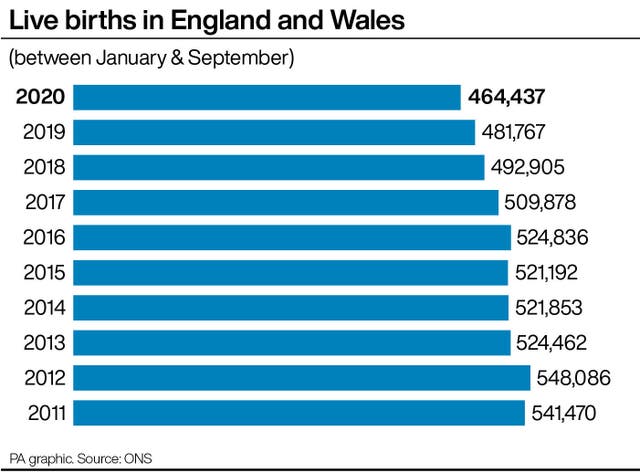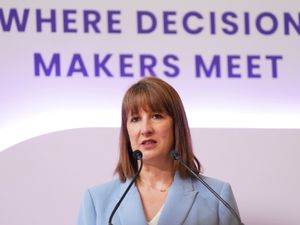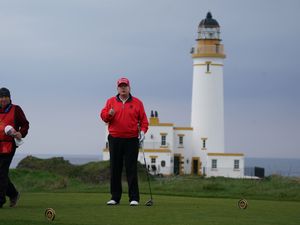Fertility rates in England and Wales fall for eighth year in a row
Data from the Office for National Statistics found there were 464,437 live births in England and Wales between January and September 2020.

The fertility rate in England and Wales has fallen for the eighth year in a row, new figures show.
Data from the Office for National Statistics (ONS) found there were 464,437 live births in England and Wales between January and September 2020.
This is a drop of 3.6% from the 481,767 during the same period in 2019 and a 15.3% decrease since the most recent peak of 548,086 in 2012.
The total fertility rate fell from 1.65 children per woman in the first three quarters of 2019 to 1.6 for the first nine months of 2020 – the eighth year in a row it has fallen and the lowest level in the last decade.
The total fertility rate is the average number of live children a group of women would have if they experienced the age-specific fertility rates for the calendar year in question throughout their childbearing lifespan, the ONS said.

The new figures, published on Monday, also showed that there were 153,464 live births during the period of the strictest coronavirus lockdown measures in England and Wales between April and June.
This was the lowest number of births during these three months since 2011.
In England and Wales the stillbirth rate decreased from 4.0 stillbirths per 1,000 total births in 2019 to 3.9 in the first three quarters of 2020, which is in line with the long-term trend, the ONS said.
The proportion of all preterm live births also fell for the second year in a row, from 7.8% in 2019 to 7.5% in the first three quarters of 2020.
The proportion of live births with a low birthweight in England and Wales has been stable at between 6.9% and 7.1% in the last decade but the percentage fell from 6.9% to 6.8% in the first three quarters of 2020, the ONS said.
David Corps, of the vital statistics outputs branch at the ONS, said: “In line with recent trends there have been fewer births in 2020 so far, compared with the same stage in 2019.
“However, there were still large numbers of parents facing the challenges of a newborn during pandemic restrictions.
“There were over 150,000 live births during quarter two, coinciding with the first lockdown and the tightest restrictions with similar numbers born in quarter one, pre-lockdown restrictions.
“There have been concerns about the effect of the pandemic on stillbirth rates and while studies in other nations have reported a reduction in preterm births during lockdowns, we found that stillbirth rates and preterm live births in England and Wales in 2020 are broadly in line with recent national trends.”
The ONS said that it had used NHS birth notification data to compile the figures because of the impact of the Covid-19 pandemic on civil birth registrations, which it has traditionally used to compile its birth statistics for England and Wales.
It added: “In response to the coronavirus (Covid-19) pandemic, birth registration services in England and Wales were suspended in March 2020.
“Since June 2020, birth registrations have restarted where it was safe to do so but the 2020 birth registration data the ONS has access to is currently incomplete.
“Therefore, we have used NHS birth notification data to provide more timely estimates of 2020 births in England and Wales and investigate the effect the coronavirus pandemic may have had on births.
“When NHS birth notification data are compared with birth registration data, we find that differences are small, especially at the national level, and we are confident that the provisional figures in this release are of sufficient quality.”





